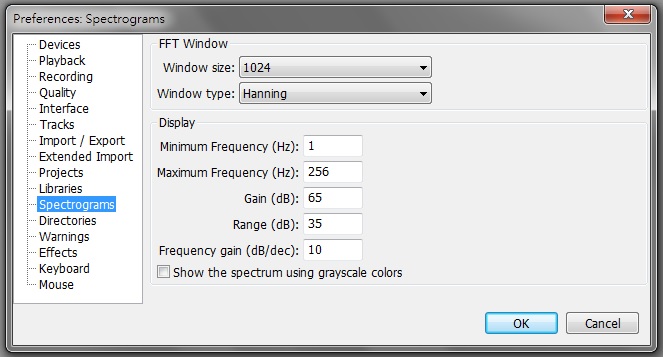Useful open source free software:
1) EDFbrowser is a free, open source, multi-platform, universal viewer and toolbox intended for, but not limited to, time series storage files like EEG, EMG, ECG, Bio-Impedance, etc. It can be downloaded from many free download sites, a few are shown below.
http://www.teuniz.net/edfbrowser/
http://www.tomsguide.com/us/download/EDFbrowser,0301-34240.html
Polyman is another useful checker/viewer for EDF+ files. It can be downloaded from many free download sites, such as
http://www.edfplus.info/downloads/downloads.html
The Frequency Analysis fucntion in Polyman allows for finding specific frequency peaks conveniently. (The OPI Console Spectrogram starts from 1Hz, with 0.5Hz increment for each band, and with adjustable maximum frequency, so you can find Alpha (α) wave and Sigma (σ) wave frequency peaks as described in My EEG Frequency.)
You can learn about EDF open format from above sites, or do your own search and learn more about EDF open format and the many, many applications supporting it.
2) Audacity(R) is a free, easy-to-use and multilingual audio editor and recorder for Windows, Mac OS X, GNU/Linux and other operating systems. It is equally useful for editing and analyzing bio-signal data files (in .WAV format) such as EEG, ECG, etc. both in the time domain (waveform) and in the frequency domain (FFT).
http://audacity.sourceforge.net/about/
http://audacity.sourceforge.net/download/

For viewing EEG data files, the typical FFT settings are as follows:
go to menu item EDIT \ PREFERENCES \ SPECTRAGRAMS
FFT Window
Window size: 1024 or 2048 (2" or 4" period)
Window type: Hanning
Display
Minimum Frequency (Hz): 1
Maximum Frequency (Hz): 256
Gain (dB): 60~70 (as adjusted by user based on measured signal level)
Range (dB): 35
Frequency Gain (dB/dec): 10 (to equalize 1/f noise floor in typical sensor and ADC setup)
(deselect: show the Spectrotrum in Colors)
then most of EEG energy bands can be visually distinguished.
3) Example data sets for viewing using EDFBrowser or Polyman: Example data files in .EDF format:
1. ECG/HR example: 2 sets of ECG and corresponding HR streams from 2 different persons. The first is with normal calm breathing (and shows partial coherence signature), the second is with deep calm breathing (and shows very strong coherence signature.)
4) Example data sets for viewing using Audacity: Example data files in .WAV format:
2. ECG example: normal breathing followed by deep diaphram breathing. Note the heart rate and electrical amplitude are modulated by inhaling (faster, smaller amplitude) and exhaling (slower, larger amplitude).
3. EEG example: alpha wave with eye closed followed by eye open, see the difference in intensity. Note the jaw clenching (EMG) 3 times as markers preceding each section.
4. ECG example: heart beat signal amplified for audio playback fun.
